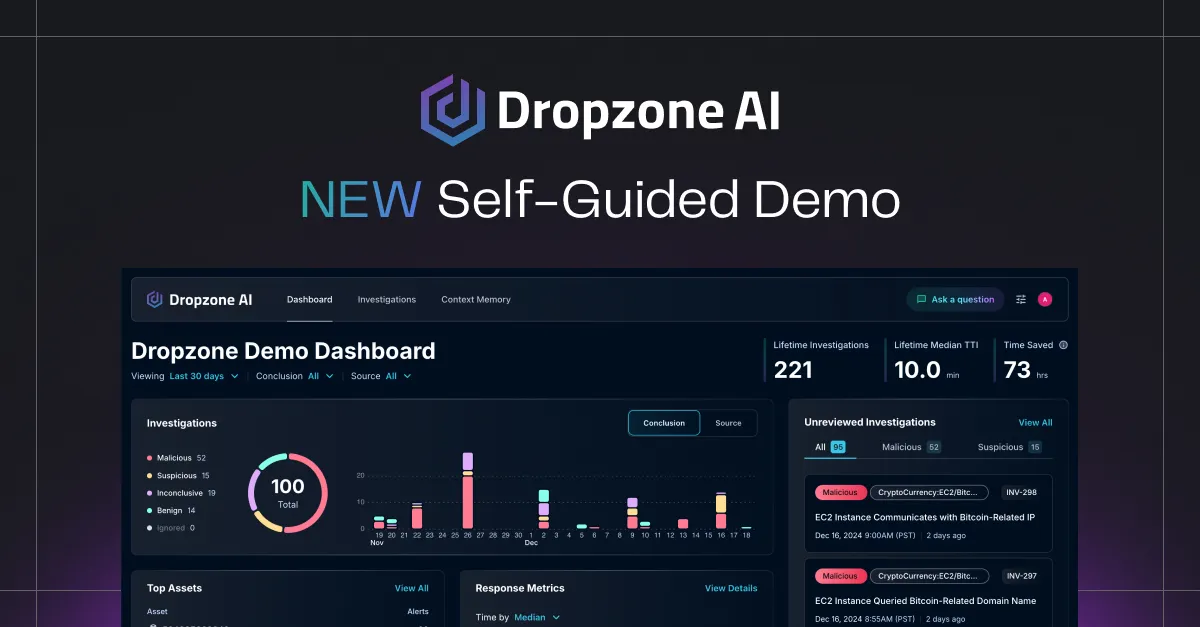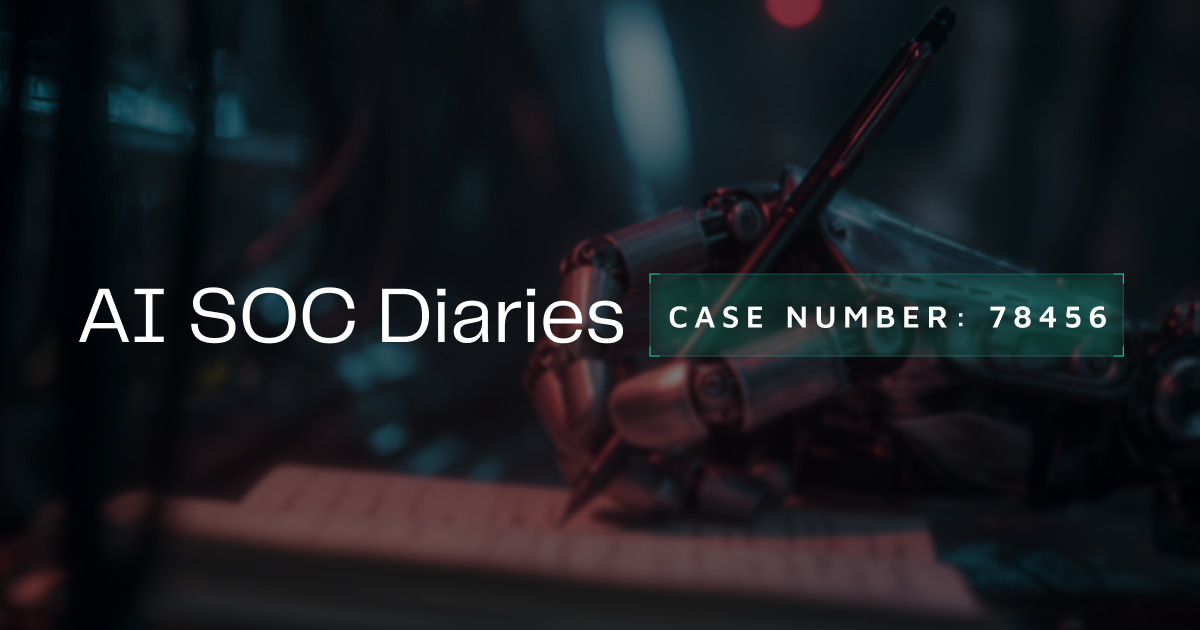Artificial intelligence and machine learning unify numerous data streams to detect patterns that indicate a threat. As organizations continue to grow and expand, they add more digital assets, which generate more data, resulting in a flood of information that overwhelms analysts. Despite their best efforts, the manual processes used by traditional SOCs lead to slow response times and many alerts that are not thoroughly investigated, further exposing the organization.
Artificial Intelligence (AI) and Machine Learning (ML) can help SOCs tackle the overflow of alerts, transforming their operations. They automate routine tasks, enhance threat detection, and provide continuous monitoring to enable SOCs to function more efficiently and effectively.
This article explores the challenges of SOC operations and provides actionable guidance on how AI and ML technologies can be leveraged to revolutionize them, enhance their capabilities, and position them to meet future challenges.
The Challenges Faced by Modern SOCs
Alert Overload
As organizations expand their digital footprints, the number of devices, applications, and users increases, leading to a corresponding rise in security alerts. These alerts, generated by various security tools, can range from routine notifications to critical warnings of potential breaches. However, the sheer volume can lead to alert fatigue, where analysts become overwhelmed and desensitized, making distinguishing between false positives and genuine threats difficult.
This flood of alerts is a matter of volume and complexity. Modern threats are sophisticated, often involving multiple stages and vectors, which generate numerous alerts that need to be pieced together to form a coherent picture. This can be daunting for human analysts, leading to delays in identifying and responding to threats.
Staffing and Skills Shortage
Despite cybersecurity’s growing importance, there is a well-documented shortage of qualified professionals in the field. The demand for skilled SOC analysts far outpaces supply, leading to overworked staff who struggle to keep up with the workload. This shortage impacts the effectiveness of SOCs and contributes to high turnover rates, as analysts face burnout from the constant pressure and high-stakes environment.
As the latest technologies and attack vectors emerge, SOCs need analysts who are not only skilled but also adaptable and capable of staying ahead of the curve. The rapid evolution of cyber threats requires continuous learning and adaptation, which can be difficult for even the most experienced professionals. However, finding and retaining such talent is increasingly challenging in the current market.
Slow Response Times
Speed is critical in cybersecurity. The longer it takes to detect and respond to a threat, the greater the potential damage. However, traditional SOCs often struggle with slow response times due to the manual processes involved in triaging alerts, conducting investigations, and coordinating responses. Analysts must sift through vast amounts of data, cross-referencing information from multiple sources, which can be time-consuming and prone to errors.
These delays are particularly problematic when dealing with sophisticated threats that can spread rapidly across networks, compromising multiple systems before they are detected. In such cases, even a few minutes delay can mean the difference between containing a threat and facing a full-scale breach.
Enhancing SOC Capabilities with AI and ML
Advanced Threat Detection
AI and ML technologies significantly enhance the ability of SOCs to detect sophisticated threats that may evade traditional security tools. Unlike rule-based systems, which rely on predefined patterns and signatures, AI and ML can analyze vast amounts of data in real time, identifying subtle anomalies and patterns that may indicate a threat.
For example, behavioral analysis is a powerful tool in AI-driven threat detection. By monitoring the behavior of users, devices, and networks, AI can detect deviations from normal patterns that may signal a security breach. This capability is particularly valuable in detecting advanced persistent threats (APTs) and insider threats, which often involve activities that appear legitimate on the surface but are malicious.
AI’s ability to process and analyze data at scale enables SOCs to detect threats faster and more accurately. Machine learning algorithms continuously learn from past incidents, refining their detection capabilities and adapting to new threat vectors. This improves the accuracy of threat detection and reduces the number of false positives, allowing analysts to focus on genuine threats.
Automating Routine Tasks
One of the most significant benefits of AI and ML in SOC operations is their ability to automate routine tasks, freeing human analysts to focus on more complex and strategic activities. Traditional SOCs often require analysts to manually triage alerts, conduct preliminary investigations, and gather data from multiple sources. These tasks are time-consuming and can lead to delays in responding to critical threats
AI and ML can automate much of this work, handling the initial triage of alerts and conducting real-time investigations. For example, AI-driven systems can analyze alerts as they are generated, determining their severity and prioritizing them based on the potential impact on the organization. This allows analysts to focus their attention on the most critical threats, improving the overall efficiency of the SOC.
AI can provide continuous monitoring capabilities, ensuring real-time threats are identified and addressed. Unlike human analysts, who need breaks and can suffer from fatigue, AI systems can operate 24/7, providing relentless vigilance and reducing the risk of missing critical threats.
Reducing False Positives
False positives drive alert fatigue and reduce the security team’s overall efficiency. They cause them to investigate events that generate a security alert but turn out not to be a threat. These false alarms can overwhelm analysts, causing them to waste time investigating benign activities while potentially overlooking real threats.
AI-driven SOC solutions significantly reduce the number of false positives by using machine learning algorithms that learn from past incidents. These algorithms can analyze the characteristics of alerts, comparing them to historical data to determine whether they are likely genuine threats. Over time, the system becomes more accurate, filtering out false positives and allowing analysts to focus on real threats.
This reduction in false positives improves the efficiency of the SOC and reduces the risk of analyst burnout. By eliminating unnecessary work, AI allows analysts to concentrate on the tasks that truly matter, enhancing their job satisfaction and effectiveness.
AI and ML in Proactive Security Operations
Proactive Threat Hunting
Traditional SOCs often operate in a reactive mode, responding to threats as they are detected. However, this approach has limitations, particularly when dealing with sophisticated threats that can evade detection until it is too late. AI and ML enable SOCs to adopt a more proactive security posture, allowing them to predict and prevent potential threats before they occur.
Proactive threat hunting involves searching for signs of potential threats within the organization’s network before they manifest as active attacks. AI and ML are well-suited for this task, as they can analyze patterns and trends in large datasets, identifying anomalies that may indicate a looming threat. By anticipating and mitigating these risks, SOCs can prevent breaches before they happen, reducing the overall risk to the organization.
For example, AI-driven systems can analyze network traffic, user behavior, and other data sources to detect early warning signs of an attack. This proactive approach enhances the organization’s security and reduces the workload on SOC analysts, who can focus on preventing threats rather than constantly firefighting.
Continuous Learning and Adaptation
One of AI and ML’s key advantages is their ability to continuously learn and adapt to new threats. Cybersecurity constantly evolves, with new attack vectors and techniques emerging regularly. Traditional SOCs rely on predefined rules and signatures to detect threats, which can quickly become outdated as attackers develop new methods.
In contrast, AI and ML systems are dynamic, continuously updating their algorithms based on new data and experiences. This allows them to stay ahead of emerging threats, adapting their detection and response capabilities to meet the latest challenges. For example, a machine learning model trained on data from past incidents can identify patterns indicative of a new type of attack, even if it has never seen that specific threat before.
This continuous learning capability is particularly valuable in the context of advanced persistent threats (APTs), often designed to evade traditional detection methods. By constantly evolving, AI-driven systems can detect and respond to these sophisticated threats more effectively than static, rule-based systems.
Enhancing Collaboration and Integration
Effective cybersecurity requires seamless collaboration and integration across various organizational tools and teams. However, traditional SOCs often face challenges in this area, as different security tools may not be fully compatible with each other, leading to silos and inefficiencies.
AI and ML technologies enhance collaboration and integration by providing a unified platform for security operations. For example, AI-driven systems can integrate with existing security tools such as Security Information and Event Management (SIEM) systems, Endpoint Detection and Response (EDR) platforms, and threat intelligence feeds. This integration allows for better coordination between different security functions, ensuring all relevant data is available in one place.
AI can facilitate better communication across SOC teams by providing clear, actionable insights that are easy to understand and act upon. For example, an AI-driven system might generate a detailed report on a detected threat, outlining the steps needed to mitigate it. This reduces the likelihood of miscommunication and ensures all team members are on the same page.
SOC Benefits of AI & ML Are Not Just Theoretical
The transformative impact of AI and ML on SOC operations is not just theoretical - it is already being realized in organizations worldwide. For instance, consider the case of a digital insurance company that faced significant challenges in managing its security operations. With a small team and an overwhelming volume of alerts, the company struggled to keep up with the pace of threats.
After implementing an AI-driven SOC solution, this client saw a dramatic improvement in its security posture. The AI system handled the initial triage of alerts, reducing the workload on human analysts and allowing them to focus on more complex tasks. Moreover, the system’s continuous learning capabilities ensured it remained effective against emerging threats, providing the company with a proactive security posture.
Dropzone AI Optimizes SOC Operations
Dropzone AI is a leading solution in AI-driven SOC operations. Dropzone AI replicates the techniques of expert analysts to automate Tier 1 alert triage and investigation. The system connects to your existing security tools and business systems in order to perform investigations just as a human SOC analyst would. It delivers alert conclusions with summaries and detailed findings, along with links to raw evidence so that human analysts can quickly check its work when needed.
With Dropzone AI, organizations can reduce alert fatigue, improve threat detection accuracy, and ensure that their SOC operations are future-proofed against emerging threats. The system’s ability to learn and adapt continuously makes it a powerful tool for enhancing its security posture.
Dropzone AI helps organizations overcome the challenges of staffing and skills shortages by automating routine tasks and providing clear, actionable insights that enable analysts to focus on strategic activities. By integrating with existing security infrastructure, Dropzone AI enhances collaboration and ensures that all relevant data is available in one place, facilitating better decision-making and faster response times.
If you’re ready to transform your SOC operations and stay ahead of emerging threats, it’s time to schedule a demo and explore what DropzoneAI can do for your organization.















